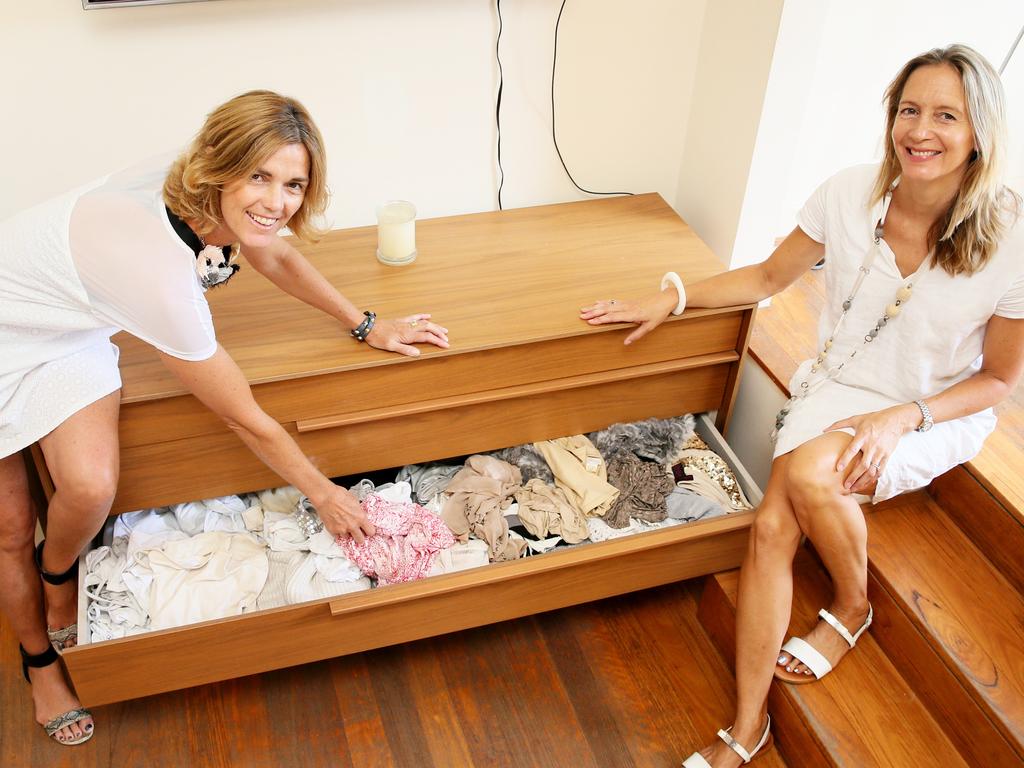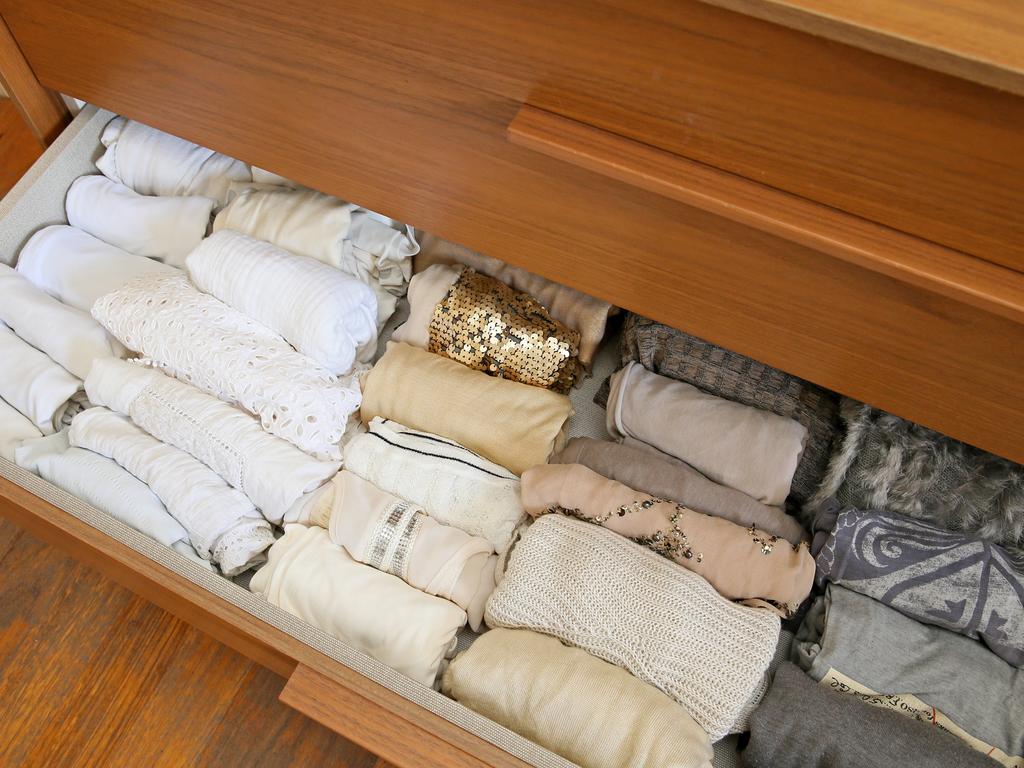Why decluttering and adopting the Marie Kondo method isn’t always a good thing
As the new Netflix sensation makes Australians start purging all the stuff that no longer gives them joy, it’s causing a bigger problem.
If you’ve climbed aboard the Marie Kondo bandwagon because of her new Netflix series, you’ve probably already spent part of your weekend folding your undies.
If such a thought wasn’t unappealing enough, seeing the masses of unwanted or unnecessary items in a pile in front of you usually is.
But, in a sad turn of events, now those piles are ending up at charity shops — or dumped beside overflowing bins.
While op shops usually welcome unwanted — quality — items, major charities have had to issue reminders they’re not a substitute for the tip, and they don’t want or need your broken or damaged stuff.
They services are run by volunteers who spend their time trawling through the overload of items you’ve purged in your Marie Kondo-verdose.
And what’s worse is Aussie charities are paying $13 million a year to send unusable donations to landfill.
Lifeline says about half its stores across the country can’t accept donations at the moment because they’re at capacity.
It’s no coincidence the overload comes as Netflix viewers go nuts for Kondo’s new series Tidying Up.
The Japanese sensation’s book The Life-Changing Magic of Tidying Up already gave her a cult following, but she’s now gained a frenzy of new followers thanks to the show that sees her visit people’s homes and help them declutter.

It seems new fans might have taken things a little too literally and in their quest for a minimalist home, have removed anything that didn’t “spark joy”, as Kondo suggests, ultimately sending these items to landfill.
Another TV series that had a huge impact, ABC’s War on Waste, taught us we have a huge problem with waste, not just in Australia but across the world. Australians send 6000kg of clothing to landfill every 10 minutes.
The National Association of Charitable Recycling Organisations estimates 60,000 tonnes of unwanted items are sent to landfill each year, and that was before the Kondo effect took hold.
With charity bins around Australia overflowing, tidying converts have taken to leaving discarded clothing outside donations bins, making them likely to be classified as “contaminated” and end up in landfill.
Lifeline’s Jamie Mackay told the ABC the practice qualified as “illegal dumping”, and said it was heartbreaking to see.
“We collect these donations to raise funds for a great cause to help save lives,” Mr Mckay said.
Professional organiser Jo Carmichael, who has based her business on the Kondo method, said with every positive there was often a negative.
“I know how challenging it can be to dispose of goods appropriately,” she said.
“Local charities have been urging - pleading, with us for years, not to dump our rubbish in their charity bins or on their door steps.
“Most of us listen and do the right thing - I know my clients have to accept that some things are not acceptable to donate - and are resigned to sending them to the tip.
“Perhaps in the Marie Kondo-craze, some people, without adequate direction, have mistakenly dumped their rubbish with charities.”
MORE: The waste issue we can’t get right


Australia’s waste problem is something we’re not getting better at. Two years ago Ikea’s head of sustainability said at a Guardian Sustainable Business event that consumers in the developed world had reached “peak stuff”.
James Wallman, author of Stuffocation: Living More With Less, said it was “the material equivalent of the obesity epidemic”.
About that time Mr Wallman said the large interest in Kondo’s work proved there was a problem with overconsumption, but that did not get to the core of the issue.
“We’re still using mental tools honed through millennia of scarcity,” he said.
“Through your grandmother telling you ‘see food eat food’, (we now think) see stuff get stuff,
“It’s very hard to switch our mental tools, which is why lots of people, once they’ve done that clearing up and feel good about it, think: ‘I’ve got all this space on my shelves. What do I do?’ And they go buy more.”
So the cycle continues. The garbage bags we see piled up in Kondo’s show don’t just magically disappear and make your life better.
They ultimately end up filling our world with more rubbish, something we all really need to get better at.

Continue the conversation @stephanie_bedo | stephanie.bedo@news.com.au




